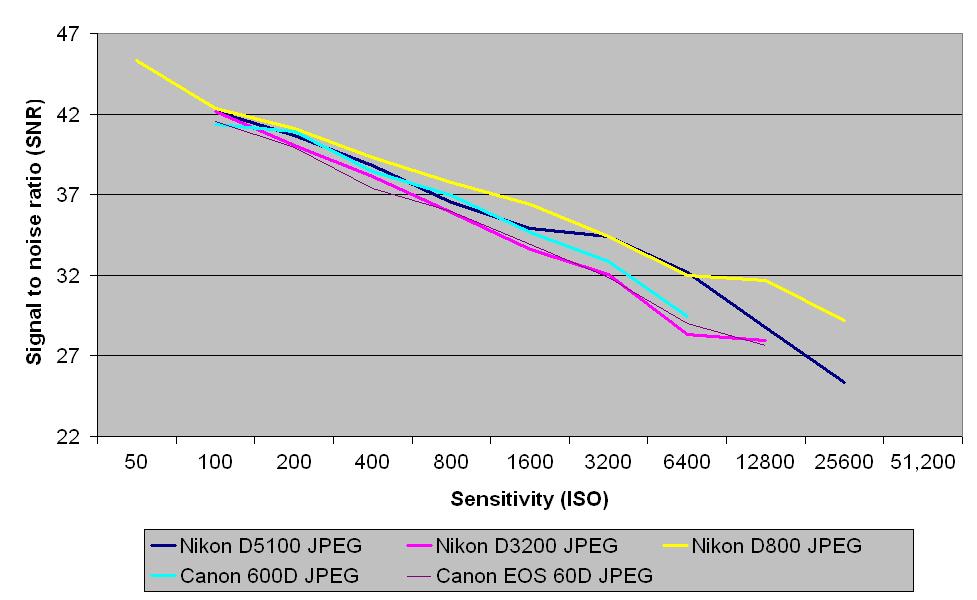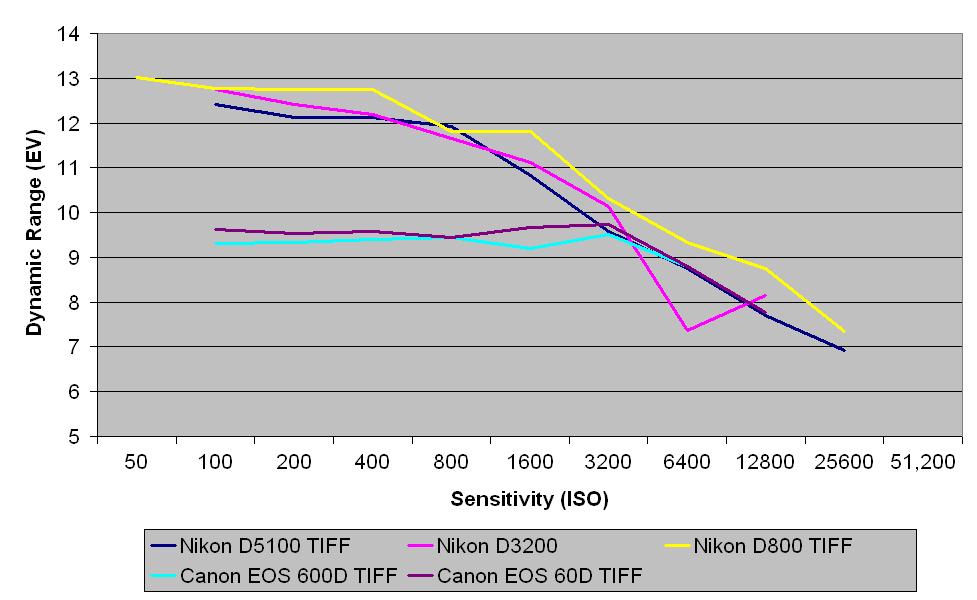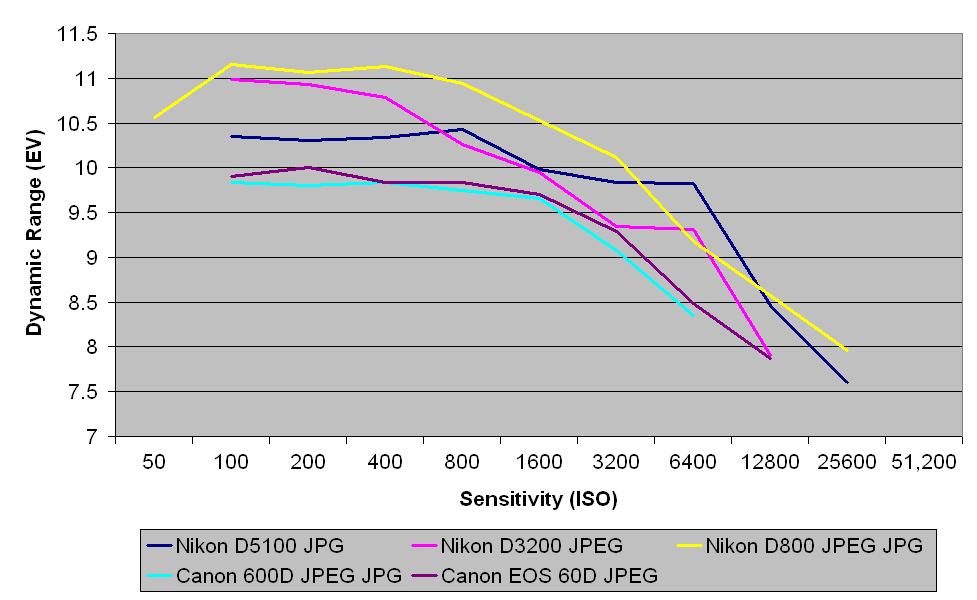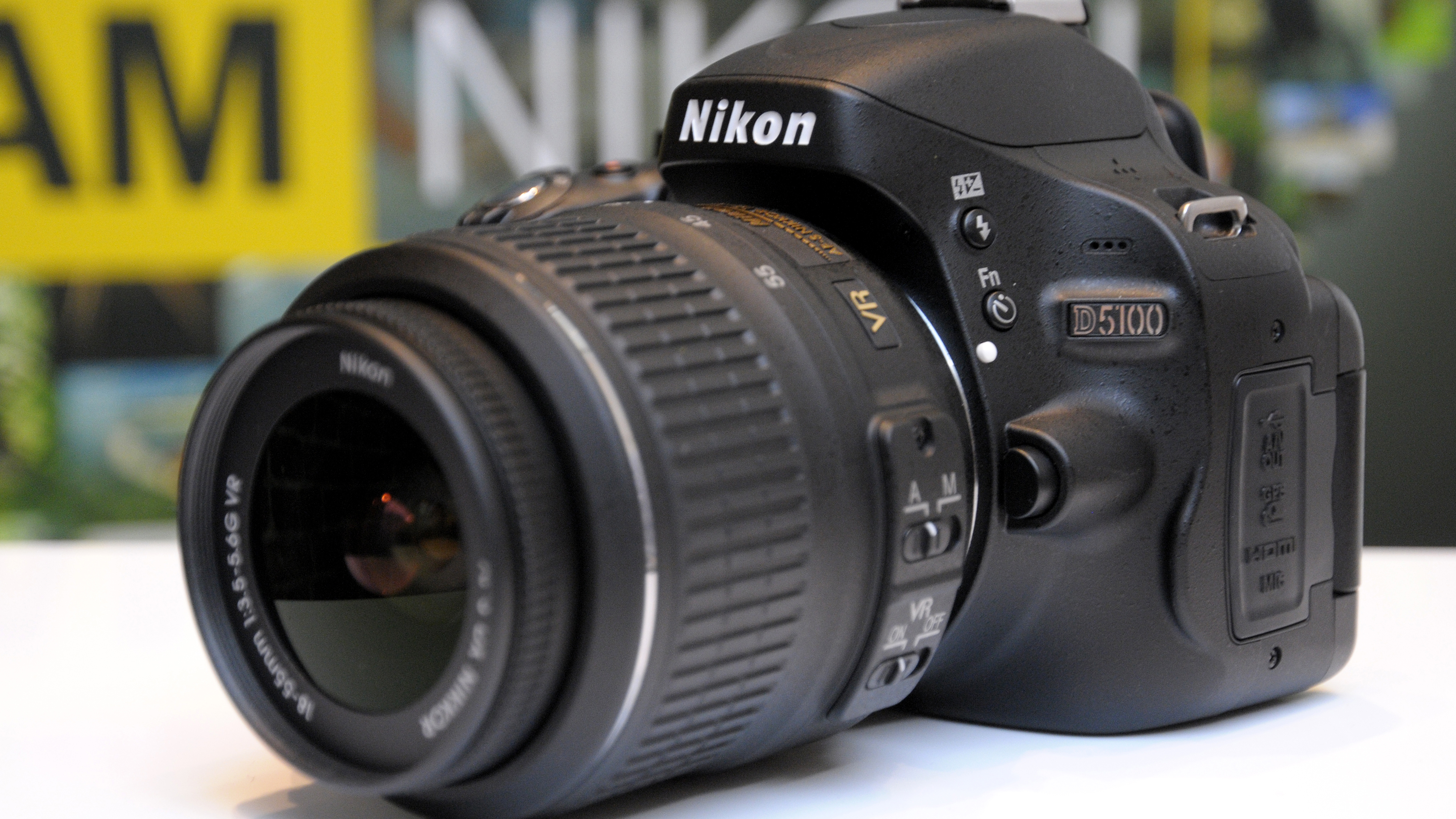Why you can trust TechRadar
We shoot a specially designed chart in carefully controlled conditions and the resulting images are analysed using DXO Analyzer software to generate the data to produce the graphs below.
The Nikon D5100 results have been compared with those from the Nikon D3100, D3200 and D800 as well as the Canon EOS 600D and Canon 60D.
JPEG Signal to noise ratio
A high signal to noise ratio (SNR) indicates a cleaner and better quality image.

JPEG images from the Nikon D5100 compare well with the other cameras, even the full-frame Nikon D800. At sensitivities over about ISO 3200, the D5100 beats the new D3200 and the Canon 600D and 60D, indicating that images are cleaner, with less noise.
Raw (after conversion to TIFF) Signal to noise ratio

Though it is considerably older, the Nikon D5100 produces raw files which, after conversion to TIFF, have a signal to noise ratio close to that of images from the D3200 and D800. The two Canon cameras fall some way behind.
JPEG Dynamic range

This chart indicates that the D5100's JPEGs have a at least a 0.5EV higher dynamic range than the Canon EOS 600D's JPEG files across the entire sensitivity range, but they fall some way behind the newer Nikon D3200 and D800 at the lower sensitivity settings.
Raw (after conversion to TIFF) Dynamic range

This chart indicates that the D5100's raw files (after conversion to TIFF) follow a very similar pattern to the JPEGS with regards to dynamic range. In other words, they beat both the Canon EOS 600D and 60D's across the lower sensitivity range, but they fall some way behind the newer Nikon D3200 and D800.
Current page: Noise and dynamic range
Prev Page Image quality and resolution Next Page Sensitivity and noise